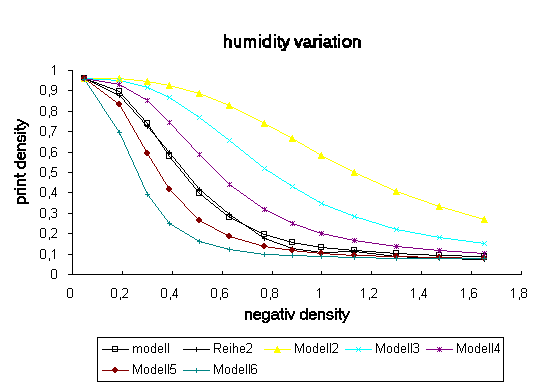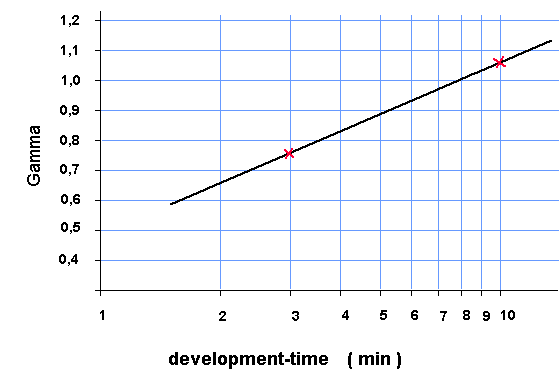|
Lit 1
|
Kunstphotographische Edeldruckverfahren Heute
Frank Heidtmann, Berlin Verlag
|
|
Lit 2
|
Fachtheorie für alle Berufe der Druckindustrie
Eisenhut Leischner Rene, Gehlen Verlag
|
|
Lit 3
|
Tiefdruck und kleinere Druckverfahren
O.M. Lilien C.W. Gerhardt, Hiersemann Verlag
|
|
Lit 4
|
Bruckmann`s Handbuch der Drucktechnik
Erhardt D. Stiebner
|
|
Lit 5
|
Der Filmlichtdruck, ein neues Fettfarbenumdruckverfahren,
Otto Mente, Photographische Rundschau und Mitteilungen 1926 Nr. 63
Seite 51 55
|
|
Lit 6
|
Wodurch entsteht die Gelatinehärtung bei den Chromatverfahren ?
Dr. F. Schömmer wahrscheinlich Photographische Rundschau
|
|
Lit 7
|
Der Filmlichtdruck als Edelpositivverfahren
Max Bölling, Photographische Rundschau und Mitteilungen 1928 Nr. 65
S. 289 - 292, 375 - 377, 439 - 442
|
|
Lit 9
|
Die verschiedenen Methoden des Lichtdruckes geschichtlich,
August Albert, Halle/S 1900
|
|
Lit 10
|
Das Gesamtgebiet des Lichtdruckes und die Emailphotographie,
J. Husnik, 5. Aufl. Wien 1922 chemisch technische Bibliothek Nr. 22
|
|
Lit 11
|
Handbuch der modernen Reproduktionstechnik
2. Aufl. Bd. 2 Fritz Pfund 1924 Klimschs Graphische Bibliothek
|
|
Lit 13
|
Druckplattenherstellung im Lichtdruck
Werner, Poly Jahrbuch 1967 Frankfurt/M.
|
|
Lit 14
|
Der Lichtdruck an der Hand und Schnellpresse samt allen Nebenarbeiten,
August Albert, Enyklopädie der Photographie Nr. 32, 2. Aufl. 1906 Halle/S.
|
|
Lit 15
|
Handbuch über das Lichtdruck Verfahren
Julius Allgeyer, 2. Aufl. 1896 Leipzig
|
|
Lit 19
|
Grundkenntnisse der Farbreproduktion
Tillmann Petersen, 1972 Stuttgart
|
|
Lit 20
|
Fette, Harze, Firnisse, Ruß, schwarze Farben
Eduard Valenta, 2. Aufl. 1925 Halle Verlag Wilhelm Knapp
|
|
Lit 21
|
Der Fettfarbenumdruck
Karl Sütterlin, Magdeburg
|
|
Lit 22
|
Die bunten Druckfarben
Eduard Valenta, 1914 Halle (Saale) Verlag Wilhelm Knapp
|
|
Lit 23
|
Die Harze, Kunstharze, Firnisse und Lacke
Dr. Hans Wolf, 1921 Sammlung G"schen
|
|
Lit 24
|
Heliogravüre
Willi Schuldes / Horst Sprang Verlag Otto Maier
|
|
Lit 25
|
moderne Verfahren für Reproduktion und Chemiegraphie
Ernst M. Schneider, Frankfurt Verlag Ullstein
|
|
Lit 26
|
Das Papier
Eduard Valenta, 1922 Halle (Saale) Verlag Wilhelm Knapp
|
|
Lit 27
|
Arbeitsblätter zur Farbenlehre
Gerhard Gairing, 1986 ISBN 3 88013 350 6 Verlag Beruf + Schule
2210 Itzehoe
|
|
Lit 28
|
Lithographie für Künstler
Kurt Lohwasser, 1980 ISBN 3 7625 1211 6 Bauverlag Berlin
|
|
Lit 29
|
Lehrbuch der Reproduktionstechnik
Rolf Ihme, 1984 ISBN 3 88013 203 8 Verlag Beruf + Schule 2210 Itzehoe
|
|
Lit 34
|
Lichtdruck
Dipl.Ing. Jürgen Passeyer Der Deutsche Drucker Nr.18 08.06.89
|
|
Lit 35
|
Untersuchungen von grenzflächenphysikalischen Eigenschaften
und deren Veränderungen an farb und wasserführenden Oberflächen
in Offsetmaschinen
J. Steidel, H. Urban, G.R. Joppien, G. Hübner, Chr. Hars
Institutsbericht 2/1988
Institut für Druckmaschinen und Druckverfahren
der Technischen Hochschule Darmstadt
|
|
Lit 38
|
Grundlagen der Verfahrenstechnik
Bernd Kögl, Franz Moser, Springer Verlag
|
|
Lit 39
|
Compendium der practischen Photographie, F. Schmidt
Verlag Otto Nemnich, Karlsruhe 1896
|
|
Lit 40
|
The Light Sensitivity of Carbon Tissue
Report Nr.8 Carbon Tissue Commission, ERA
H. Gerding, J.W. Ypenburg University of Amsterdam 1963
|
|
Lit 41
|
Grundlagen der Verfahrenstechnik für Ingenieure
Hans Dieter Bockhardt, Peter Güntzschel, Armin Poetschukat
VEB Deutscher Verlag der Grundstoffindustrie
|
|
 .
.
 .
.
 .
.

 My grindingmachine is based on an old windscreen wiper used in cars. It works without problems over the years
for all sizes of my plates.
My grindingmachine is based on an old windscreen wiper used in cars. It works without problems over the years
for all sizes of my plates.  The description is written on behalf my temperature-controlled collotype-oven with aluminium
hot plate and a large-scaled woven fabric cover. This construction allows a quick evaporating
of the water without making any whirl.
The description is written on behalf my temperature-controlled collotype-oven with aluminium
hot plate and a large-scaled woven fabric cover. This construction allows a quick evaporating
of the water without making any whirl.  The light-quantity for my collotype-plates (D=0) is 14000 watt*sec/qm
The light-quantity for my collotype-plates (D=0) is 14000 watt*sec/qm  For the plate-exposure a simple woodframe with a window-seal is useful. If you mount your
negativ top down with adhesive tape in this frame, you can put the frame over the plate and
let a vacuum-pump remove the air. So the air-pressure will held your negative down.
Be carefull - the gelatine-coating of your plate is hygroscopic - at 50% relative humidity
it's possible to have a moisty plate. So your negativ will stick on your plate and destroy
its surface. This will be seen by printing the plate.
That's why I do exposure with "hand-warm" printing-plates.
For the plate-exposure a simple woodframe with a window-seal is useful. If you mount your
negativ top down with adhesive tape in this frame, you can put the frame over the plate and
let a vacuum-pump remove the air. So the air-pressure will held your negative down.
Be carefull - the gelatine-coating of your plate is hygroscopic - at 50% relative humidity
it's possible to have a moisty plate. So your negativ will stick on your plate and destroy
its surface. This will be seen by printing the plate.
That's why I do exposure with "hand-warm" printing-plates.  My plate washing machine is based on an old windscreen wiper used in cars and works with a
simple electrical controller without any further manual operation.
My plate washing machine is based on an old windscreen wiper used in cars and works with a
simple electrical controller without any further manual operation.  This little cuvette for platesize 30x40cm is done with 6mm glass and aluminium-profil fixed with
common silicone glue. The simple slider makes handeling easy.
This little cuvette for platesize 30x40cm is done with 6mm glass and aluminium-profil fixed with
common silicone glue. The simple slider makes handeling easy.